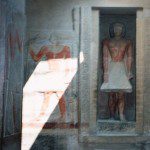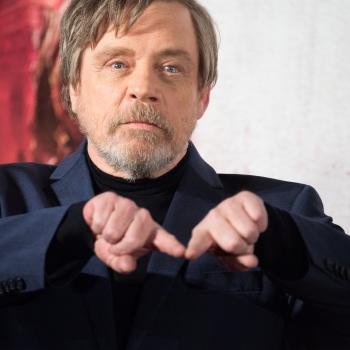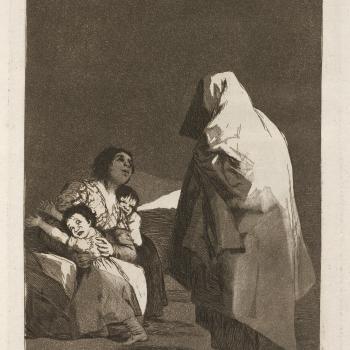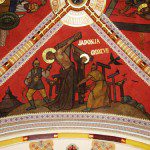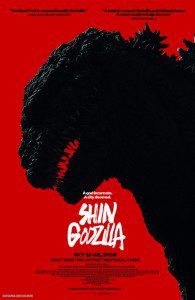
Shin Godzilla , previously entitled Godzilla Resurgence, brings Godzilla back home to Toho, the 29th of their own Godzilla films, and, once again, another major reboot for the giant monster. After Gareth Edward’s 2014 American Godzilla film, which at least felt like a proper Godzilla film compared to the previous American attempt, Toho has decided to bring back their Japanese flare to the series, allowing them to address many social and political concerns which have emerged since Final Wars. This should not be a surprise for Toho has consistently used the Godzilla franchise to deal with the issues of the day, and in the wake of Fukushima, it is not surprising that Japan would want to bring Godzilla back as a way to address what happened due to that disaster.
Indeed, Fukushima is so important with this film that it can be said that now Godzilla has become an allegorical representation of Fukushima and the dangers which it brought to Japan. When Godzilla first emerges, it is believed Japan is facing a terrible natural disaster; indeed, only when video footage shows a living creature behind it does the government accept the suggestion some signs indicated that a creature was behind the disaster. Godzilla in this film is an evolving creature, and so it has many forms, the earliest of which slowly finds itself on land, plodding through and destroying whatever is in its path. Slowly it gains strength to change and become the Godzilla which we all expect, and indeed, Godzilla more powerful than ever before. Here, Godzilla actually takes on the best elements of Hedorah, which is not surprising, because of Godzilla arises here similar to the way Hedorah did in the 70s Godzilla movie. It would seem the creature developed in part to nuclear waste which had been collected in the ocean for over sixty years; when it started partaking of that waste and became Gojira, we do not really know: all we have is a Japanese scientist who left notes predicting its emergence, the scientist who gave it the name Godzilla.
Key to the story – outside of the attempt to stop Godzilla in its tracks – is the political situation which develops as a result of its walk into Tokyo. For that is more or less the extent of Godzilla’s objective – to get into land, and eventually, to propagate itself once inland. This of course makes the rest of the world worried: no one knows the extant of its potential evolution, and if more Godzillas would emerge, the world feared that they would destroy humanity in the process. The United States wanted a nuclear solution, thinking it was the only way to stop Godzilla and make sure it did not threaten the rest of the world, and gets the United Nations onboard its plan Japan, of course, does not want this, indeed, it frightens them as they think about the two previous bombs which hit the nation and the devastation which occurred. And so, as a way to prevent such a disaster, some scientists working with the Japanese government and some allies in the United States try to find a way to stop Godzilla so that Japan does not suffer under a third bomb in its history.
The governmental reaction parallels elements of its reaction with Fukushima. At first many leaders suggested telling the public only the bare minimum, so as to avoid creating a panic. The hope was that Godzilla, having come from the ocean, would not be able to withstand entry upon land, and once that was shown to be wrong, then various committees were put in place, each with their own suggestion of what to do, many more concerned about their own political career than the safety of the nation. Eventually, when a plan develops to take on Godzilla, many go preparing for death, knowing they will not survive similar to the way many went into Fukushima to take care of its reactors. For our heroes to get their plans through, they had to deal with the worst side of democratic government: its bureaucracy. To get a defense force into place took a lot of political clout, because it also meant that Japan would in theory be acting contrary to its treaty with the United States. But because Japan was also, for most of the film, working with officials from Washington, the risk associated with breaking the treaty was minimum, especially due to the emergency situation.
Nonetheless, the human factor in the film is very much the comedy of errors, and the possible triumphs, when Japan was faced with a threat no one could have expected. It made for a lot of talky scenes, where the errors were highlighted, allowing for the farce to be properly played out to the end. Those who wanted and could do more had to slowly get their plans put in place. Risks had to be taken which politicians never want to take.
Now, this is a Godzilla film, and so the real question is, what do we make of this version of Godzilla? He’s as powerful as he has ever been. Yes, the first form is a bit disconcerting in that it is likely to make some laugh and think it was an outtake from Doctor Who, but even then, the way they have Godzilla move is interesting and one is able to slowly grasp what they wanted to do with that form, and it works. It moves differently, its eyes look silly, it is clearly a man in suit, but yet is that what we should expect from Godzilla? Once Godzilla properly gets on his feet and faces the military advance sent to take it down, we find how powerful he has become – he is physical strong, yes, but his atomic blast is more powerful than before, and comes from more than just his mouth. Whatever is in his way is going to be hit hard. Despite how powerful he has become he also has some weaknesses – he needs rest once he has used his blast, which gives time to find a way to deal with him, and that is eventually to find a way to freeze him in place. Clearly, at the end, there are all kinds of ways for Godzilla to re-emerge, either waking up from its frozen state, or to have a new Godzilla emerge, progeny which Godzilla left behind. It is set up perfectly for a return visit from a violent, indeed, destructive Godzilla instead of the heroic form he has taken in the more recent American film, but on the other hand, since the motive of Godzilla’s emergence is not known, it is possible a new threat will show up explaining why Godzilla first came to land, and will require scientists finding a way to resurrect him to stop that new threat.
The message of this film seems to be aimed at criticizing modern democratic governments and how they deal with national emergencies through committee. When Godzilla was in its weakest form, it might have been able to be stopped, but the Prime Minister called off the attack when it was clear that collateral damage would harm civilians who had not properly evacuated the area. Yes, we can understand why he did so, especially since the committees often emphasized the political situation and kept suggesting Godzilla was going to stop and cause no more harm. There was also a bit of a nationalistic overtone to the film, where the nation needed to work together instead of being a mere puppet to the United States and its interests. Last, but not least, there is also discussion of the economic impact of Godzilla just as there was a discussion of the economic impact of Fukushima, so that we see some in the film were more concerned about stocks and dividends than human life, though at the end, the new government realized that Japan had been able create a resurgence after World War II, and so they could do it again, this time better, thanks to experience.
It is a good Godzilla film. They could have cut the various governmental scenes lightly to trim the movie (it is two hours long), to speed up the pace, but it would have lost some of the effect those scenes brought to the film. It was important that this time, Godzilla was truly a monster by himself, with an objective not entirely clear, and that he was just a big walking threat taking out anything in its way. Yes, Godzilla needs other monsters to fight in sequels, but it is important that Godzilla is first shown off by himself, to show that even if he becomes a hero, for whatever reason, he is never going to be tame.
If you like Godzilla films, see it. It is Godzilla as we like him. Toho shows Edwards that there are all kinds of ways to make the human scenes of Godzilla effective and entertaining but also there are ways to upgrade Godzilla and have him once again the King of the Monsters. Edwards deserves credit for making a proper Godzilla film, but Toho shows why Godzilla will always be best with them.
Stay in touch! Like A Little Bit of Nothing on Facebook:
A Little Bit of Nothing


